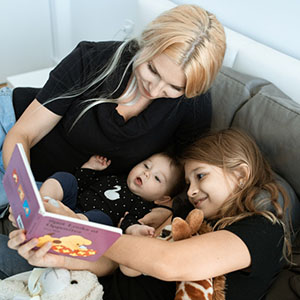Advancement in the child attachment interview and the child and adolescent reflective functioning scale using a PDM-2 framework: case reports

All claims expressed in this article are solely those of the authors and do not necessarily represent those of their affiliated organizations, or those of the publisher, the editors and the reviewers. Any product that may be evaluated in this article or claim that may be made by its manufacturer is not guaranteed or endorsed by the publisher.
Authors
The Child Attachment Interview (CAI) is a well-established semi-structured interview, widely used to identify attachment representations in middle childhood and adolescence. The application of the Child and Adolescent Reflective Functioning Scale (CRFS) to CAI narratives allows for an assessment of child mentalization, considered a strong predictor of attachment security. The 2nd edition of the Psychodynamic Diagnostic Manual (PDM-2) includes CAI and CRFS as valid and reliable assessment measures in order to assess the dominion of the Mental Functioning axis. The aim of the present paper is to investigate the informative power of CAI and CRFS for the overall understanding of mental functioning and personality in a PDM-2 framework. The present report includes the discussion of two clinical cases of school-aged children in applying the Psychodiagnostic Chart-Second Edition (PDC-2) to the CAI transcript. The first case concerns a young male, aged 10, suffering from Oppositional-Provocative Disorder (externalizing disorder), while the second case concerns a young female, aged 15, suffering from Somatic Symptoms Disorder (internalizing disorder). PDC-2 for children and adolescents was used. Data from the scoring of CAI and CRFS were combined with a systematic evaluation of the qualitative contents emerging from CAI transcripts. A detailed analysis suggests that both the CAI and CRFS are useful attachment-oriented measures, able to explore child’s mental states, and together with the application of PDC-2 they provide an essential contribution in the understanding of developmental psychopathology. Implications of this innovative approach for clinical assessment, treatment design, and interventions are further discussed.
How to Cite

This work is licensed under a Creative Commons Attribution-NonCommercial 4.0 International License.






